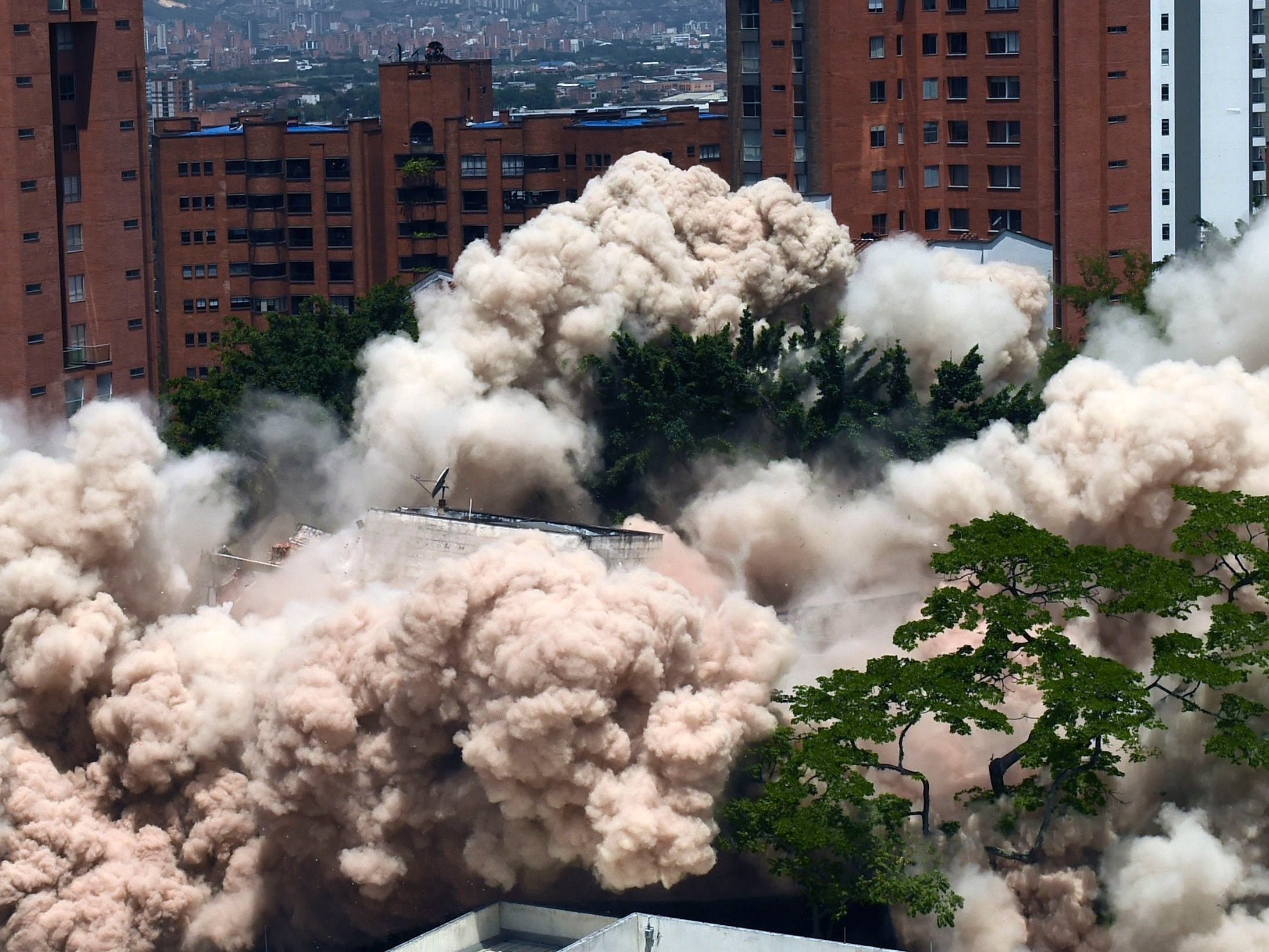Pablo Escobar's luxury eight-storey home demolished in Colombia
'History will not be written in service to the victimisers, but in recognition of the victims'

Your support helps us to tell the story
From reproductive rights to climate change to Big Tech, The Independent is on the ground when the story is developing. Whether it's investigating the financials of Elon Musk's pro-Trump PAC or producing our latest documentary, 'The A Word', which shines a light on the American women fighting for reproductive rights, we know how important it is to parse out the facts from the messaging.
At such a critical moment in US history, we need reporters on the ground. Your donation allows us to keep sending journalists to speak to both sides of the story.
The Independent is trusted by Americans across the entire political spectrum. And unlike many other quality news outlets, we choose not to lock Americans out of our reporting and analysis with paywalls. We believe quality journalism should be available to everyone, paid for by those who can afford it.
Your support makes all the difference.Pablo Escobar's “criminal fortress” – a white eight-storey concrete mansion in the Colombian city of Medellin - has been demolished in an official government ceremony.
The infamous drug kingpin and his family lived in the Monaco building during the 1980s while he built up an estimated $30bn (£23bn) fortune supplying up to 80 per cent of the world’s cocaine.
His wife and son stayed in one of the twelve apartments, while the rest of the building was taken up with two swimming pools, a tennis court, a panic room, vault, and 34 parking spaces for his collection of vintage cars and motorcycles.
In January 1988 the building was targeted by a car bomb at the beginning of a deadly feud between the Medellin and Cali drug cartels which turned the city into the world’s murder capital.
After the Monaco was seized by the government in 1990 it was left mostly abandoned. It has since become a tourist attraction, along with the rooftop where Escobar was killed in a joint US-Colombia operation in December 1993.
On Friday a crowd of about 1,600 people, including evacuated neighbouring residents, cheered and wept as it was brought down using 180 detonators. The demolition sent a cloud of dust rising tens of metres into the air.
It will now be turned into a park and memorial museum. “This means that history will not be written in service to the victimisers, but in recognition of the victims,” said President Ivan Duque.
Medellin meyor Federico Gutierrez, who backed the plans to tear down the building rather than spend $11m (£8.6m) renovating it, described the building as a “symbol of evil”. It was valued at just $1.6m (£1.2m).
“We are paying back a historical debt with our victims,” Mr Gutierrez said. Four presidential candidates and some 500 police officers were among the thousands killed during the heyday of the “King of Cocaine”.
Retired general Rosse Jose Serrano, who for many years led the elite police squad that pursued Escobar, said the Monaco building was where the drug lord planned some of his most brazen attacks.
“It was his criminal fortress,” General Serrano said.
Additional reporting by agencies
Subscribe to Independent Premium to bookmark this article
Want to bookmark your favourite articles and stories to read or reference later? Start your Independent Premium subscription today.
Join our commenting forum
Join thought-provoking conversations, follow other Independent readers and see their replies
Comments